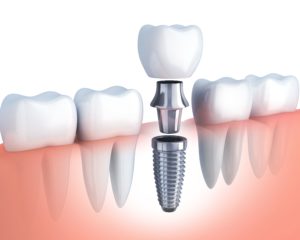
Dental implants may seem like a modern invention, but you might be surprised to learn that they have been around in some form or fashion for thousands of years. However, in the early days, they were not nearly as comfortable as they are now. After reading this post about the history and evolution of dental implants in Murphy, you’ll probably be grateful that the technology has progressed as far as it has. Keep reading to learn how dental implants have become the amazing tooth loss solution that they are today.
Ancient Dental Implants
The earliest discovered form of dental implants was found in China, when people carved bamboo pegs to replace lost teeth. They were even inserted into the jawbone to replicate the roots!
A significant discovery was made in 1931 when an archeologist found the lower jaw of a young Mayan woman in Honduras. Her jaw, which dates back to about 600 A.D., was missing three incisor teeth that had been replaced with pieces of shell that had been deliberately shaped like natural teeth. The archeologist also noticed bone growth and tartar deposits around the teeth, meaning they were fully functional, not just for aesthetics.
Modern Advancements
Throughout the 1800s, dental professionals experimented with placing many different materials, including silver, gold, porcelain, and iridium, into the jawbone to replicate the structure of a lost tooth root. Unfortunately, none of these were successful, as the jawbone ultimately rejected these materials.
Then, in 1952, a Swedish orthopedic surgeon named Dr. Per-Ingvar Brånemark accidentally discovered that titanium was the perfect substance for implants. He had placed a piece of titanium in the femur of a rabbit during a separate experiment and wasn’t able to remove it. He then realized that the titanium had become one with the bone.
Thirteen years later, he placed the first titanium implant into another person. Its amazing success has led to titanium becoming the gold standard of what we use in dental implants today.
Dental Implants in the Present
To this day, millions of dental implants have been placed under the Brånemark name, with even more implant companies using his patent that he placed in 1978. It has also been discovered that the jawbone is more likely to accept implants if their surface is “roughened,” which explains their screw-shaped structure, as opposed to a smooth post.
It’s a bit hard to believe that dental implants have only existed in their modern form for just over four decades. However, their current state has been able to maintain a success rate of more than 95%, making them popular with both dentists and their patients as a way to replace both the root and the crown of missing teeth.
About the Author
Dr. Khushboo Gandhi is a dentist in Murphy, TX who is qualified to both place and restore dental implants, saving you the trouble of being referred to an outside specialist. She is also certified in nitrous oxide sedation to help you relax in the dental chair and ease your anxieties during your procedure. To learn more about the advantages of replacing your missing teeth with dental implants, visit her website.
